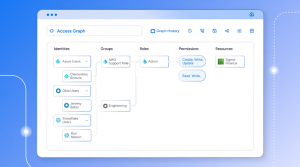Phone Cameras + Social Are Expanding the Historical Record
"There’s a plane in the Hudson. I’m on the ferry going to pick up the people. Crazy." ![]()
In a critique of the rise of Instagram (current photo sharing app du jour), Laurie Voss argues that the rise of cheap, low fidelity cameras on phones is undermining the data contained in them. And it’s not just that these pictures are lower quality now, it’s affecting their value for future generations:
With these rubbish phone cameras we take terrible photos of some of our most important moments and cherished memories. I am not complaining about composition and lighting here; I’m not a photographer. I am talking about the quantity of meaningful visual data contained in these files. Future historians will decry forever the appalling lack of visual fidelity in the historical record of the last decade.
I read that, and at first though, “Yeah, that could be an issue.” But then I realized that, well no, it’s actually the opposite. The rise of cheap phone cameras is actually increasing the historical record. This even has disruptive innovation undertones to it.
Why?
Picture = Moment + Equipment
When thinking about recording data for history pictorially, I consider two elements:
Moment
Equipment
Now moments are always going to arise. They may be significant moments, such as Janis Krums’ iconic picture above after a US Airways plan crash landed on the Hudson. Recently, the San Francisco Giants were celebrated for their 2010 World Series title with a ticker tape parade in downtown San Francisco. When I arrived at the Dublin/Pleasanton BART the morning of the victory parade, I was shocked by the number of people waiting in line for get to SF.
Just as important as the moment is the equipment. I’m not talking about the quality of the photographic equipment. I’m saying, “do you have something to take the picture?”
Before I got a phone with a camera on it, I had no way of photographing any moments. I could tweet about them, email a description of them and tell people about them. But there was no visual record at all.
I wasn’t carrying a camera around with me. Just not something I wanted to deal with as I also carried my ‘dumb’ phone. And wallet. And keys. Just too much to deal with.
But a camera included with my mobile phone? Oh yeah, that works. I’ll have that with me at all times.
Which is a much better fit with the notion of capturing moments. They are unpredictable, and do not schedule themselves to when you’re carrying a separate camera.
As for the “quantity of meaningful visual data” being reduced, I think of it mathematically:
The X/Y variable represents the decrease in data per picture. If Y is the “full” data from a high resolution photo, then X is the reduced data set. The loss of scene details, the inability to discern people’s expressions, etc. Yeah, that is a loss due to low quality cameras.
The B/A variable represents the increased number of pictures enabled by the proliferation of convenient low quality cameras. If A is the quantity of photos with high resolution cameras, B is the overall number of photos inclusive of the low quality cameras.
Multiply the ratios, and I believe the overall historical record has been improved by the advent of phone cameras. In other words, “> 1″.
Sharing Is Caring
Something the higher quality, standalone cameras have lacked is connectivity. They miss that aspect we have to share something in the moment. The fact that I can share a picture just as soon as a I take it is extra incentive to take the picture in the first place.
I share my kids’ pics with family via email, and other pics end up in my Twitter and Facebook streams. You know how painful it is to upload photos from the camera and share them? Very.![]()
Standalone cameras are like computer hard drives, locking data off in some siloed storage device somewhere. Good luck to historians in extracting that photographic data.
Convenience Wins Out
This is the disruptive innovation of convenience. People are swapping the separate cameras for the all-in-one mobile devices. And like any good low-end innovation, the quality will increase. Meaning more pictures with better detail and fidelity.
I mean, imagine if there were a bunch of phone cameras at Gettysburg?
We’d have thousands of pics, and it’d be a Twitter Trending Topic. As for the lower data per picture, damn the torpedoes, full steam ahead. Phone cameras will enrich the historical record for future generations
[Cross-posted at I’m not Actually a Geek]
A message from John Furrier, co-founder of SiliconANGLE:
Your vote of support is important to us and it helps us keep the content FREE.
One click below supports our mission to provide free, deep, and relevant content.
Join our community on YouTube
Join the community that includes more than 15,000 #CubeAlumni experts, including Amazon.com CEO Andy Jassy, Dell Technologies founder and CEO Michael Dell, Intel CEO Pat Gelsinger, and many more luminaries and experts.
THANK YOU













